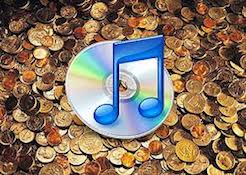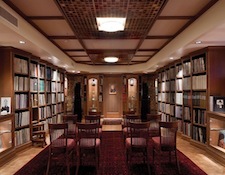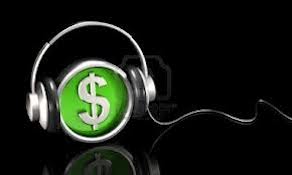It’s the time of year for saving money!
 One of the greatest joys an audiophile can have is to find a piece of gear or a cable that vastly improves their system’s sound at a vanishingly low price. Sadly for our hobby, that is increasingly more difficult to find. Cost of components always seems to creep into the equation.
One of the greatest joys an audiophile can have is to find a piece of gear or a cable that vastly improves their system’s sound at a vanishingly low price. Sadly for our hobby, that is increasingly more difficult to find. Cost of components always seems to creep into the equation.
Two things of note happened recently that got me thinking. The first was a review for an amp that sold for $10,000.00. The reviewer noted that this was a budget priced component. In real terms the reviewer was absolutely correct. It is easy to spend many times $10,000.00 for an amp or any other component in a system. When I consider that the total cost of the system I purchased in the latter part of 2011 was less than $10,000.00, that amp seemed quite expensive.
 The second thing was a video I stumbled across on the Wilson Audio web site titled “I Can See Music Everywhere.” This video is about a small Episcopal Biblical College in Tennessee called Suwannee. The video detailed a gift made by Father William Ralston, a former Suwanee professor and parish Priest, of a record collection of some 25,000 LP’s and a CD collection numbering in excess of 15,000. Because Suwannee wanted to change the lives of as many students as possible by introducing them to high end audio, the school embarked upon, and successfully built a million dollar music room. Students are encouraged come in for listening sessions and hopefully learn that something beyond iPods and ear buds are possible. No matter if you are a fan of Wilson Audio or not, check out this video. It is very well done.
The second thing was a video I stumbled across on the Wilson Audio web site titled “I Can See Music Everywhere.” This video is about a small Episcopal Biblical College in Tennessee called Suwannee. The video detailed a gift made by Father William Ralston, a former Suwanee professor and parish Priest, of a record collection of some 25,000 LP’s and a CD collection numbering in excess of 15,000. Because Suwannee wanted to change the lives of as many students as possible by introducing them to high end audio, the school embarked upon, and successfully built a million dollar music room. Students are encouraged come in for listening sessions and hopefully learn that something beyond iPods and ear buds are possible. No matter if you are a fan of Wilson Audio or not, check out this video. It is very well done.
All audiophiles know how much components can cost. That is nothing new. But what the two events got me thinking about is the cost of music. I read very little about how much of an investment we make in the music itself. By any measure a record collection the magnitude of the one at Suwannee is a startling investment. Even considering that many of the LP’s were bought years ago, it is still a huge sum of money. All done on teacher’s / Priest’s salary at a small 1500 student college. How is that even possible? Much less do so in a lifetime? Many of the LP’s and CD’s in Father Ralston’s collection were never even opened.
]]> In my hometown we have three really nice places to buy LP’s and CD’s. They each have their own strengths and weaknesses. I looked into pricing at all three. I wanted to see what the average cost of a CD and LP might be. All three carry used albums and CD’s so I used that as the low price. That averaged out to about $7.00 each. For new purchases the average price was about $16.00. Both are based on the average cost of a LP and CD purchased together. I only considered single LP’s and CD’s. I excluded box, gift or commemorative sets of either one. If I were to build a collection the size of Suwannee’s I would look to invest somewhere between $280,000.00 on the low side and $640,000.00 on the high side. Suddenly the $10,000.00 amp seemed like a huge bargain.
In my hometown we have three really nice places to buy LP’s and CD’s. They each have their own strengths and weaknesses. I looked into pricing at all three. I wanted to see what the average cost of a CD and LP might be. All three carry used albums and CD’s so I used that as the low price. That averaged out to about $7.00 each. For new purchases the average price was about $16.00. Both are based on the average cost of a LP and CD purchased together. I only considered single LP’s and CD’s. I excluded box, gift or commemorative sets of either one. If I were to build a collection the size of Suwannee’s I would look to invest somewhere between $280,000.00 on the low side and $640,000.00 on the high side. Suddenly the $10,000.00 amp seemed like a huge bargain.
Now obviously not everyone will have a record collection of 40,000 LP’s and CD’s. That Father Ralston amassed a collection of that size is astonishing. I typically buy up to as many as five or six of some combination of CD’s or LP’s at a time. To wind up with 40,000, well, I just don’t think I have that many years left.
Maybe the fact that we buy music a few pieces at a time lessens the burden of the expense. Obviously there are many people who probably buy a lot of music at any one time. I have a newfound respect for those that do. Because I have concentrated primarily on the cost of components I have mostly paid no attention at all to the cost of the music. Maybe I should start?
What all of this boils down to is that high-end audio is an expensive hobby. No matter if it is the cost of components being considered or the music ultimately purchased, this is one expensive hobby to pursue. Fortunately, when we settle into the listening chair, all of that cost stuff disappears. We can close our eyes and get lost in the music. Which is just as it should be.





